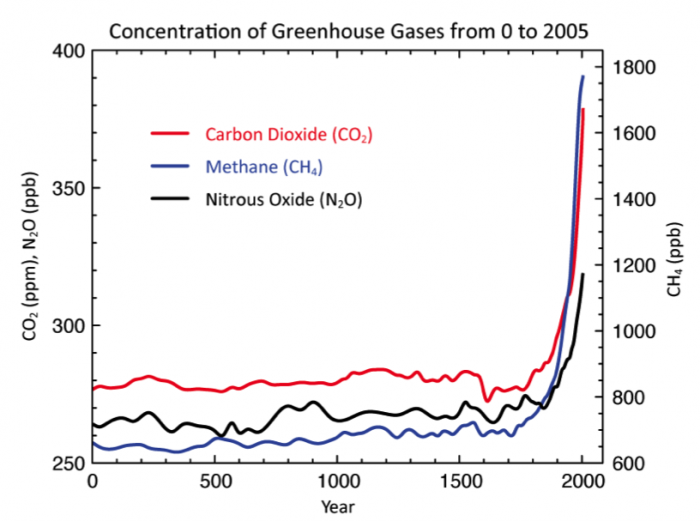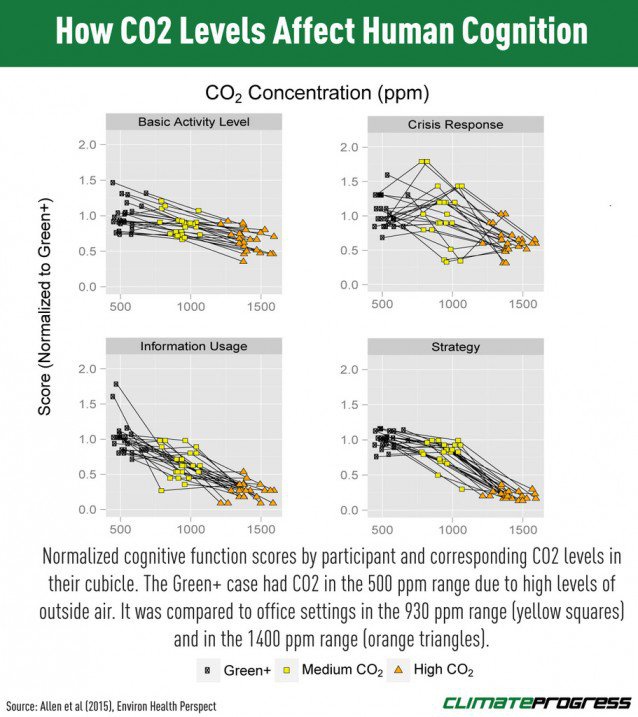TL,DR : CO2 concentration in air is easily measured and has been used as a proxy to monitor the level of potentially infectious particle people would release in a room while breathing. The idea is the more people breathe, the more they release CO2 and also possibly infectious particles.
It turns out that CO2 also plays an important role in buffering the pH of the aerosolized particles in which viruses like SARS-CoV2 travel from one person to the next. Dissolved CO2 is slightly acidic and prevents the particles from becoming too basic, which would destroy the virions. Thus higher CO2 concentrations in ambient air significantly extend the survival of the airborne virus and therefore the average time these particles remain infectious.
A CO2 concentration of just 800ppm (parts per million), while usually considered a value consistent with a well ventilated room, is nevertheless enough to significantly extend the lifespan of viruses. This means we should strive to lower CO2 concentrations in rooms as much as we can during epidemics.
So what you are saying is that we should use atomizers with basic liquids in it to protect from viruses? Like a mister with bleach or ammonia.
Bleach AND ammonia
Exactly. Or maybe inject the bleach directly in the body, as some of the most stable geniuses have suggested.
Maybe have air filters also affect ph in the air
Does this mean that it’s potentially safer to be at an oxygen bar during a pandemic? Would that be enough to stunt the viral load in the air?
What
Indeed fascinating - for somebody who knows more about CO2/pH and gas exchange around marine microalgae - indeed it does vary a lot, maybe counter-intuitively, on a tiny scale …
Pretty fascinating read!
Very interesting, thank you for sharing!
Ventilate with this:

We’re probably dumber too now:







